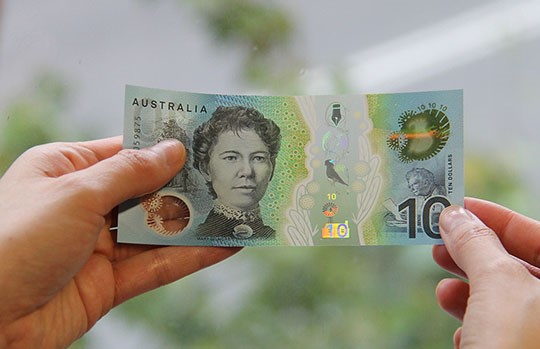Are Polymer Banknotes Here to Stay?

Countries are striving to enhance currency’s durability, sustainability, and security. In this quest, polymer banknotes are emerging as a superior alternative to traditional paper bills.
Polymer banknotes have revolutionized the currency world, significantly improving traditional paper notes. The Reserve Bank of Australia first introduced these banknotes in 1988. They were made from a synthetic polymer called biaxially oriented polypropylene (BOPP). Since then, many countries have adopted polymer banknotes, recognizing their numerous advantages in durability, sustainability, and security.
The Emergence and Adoption
The journey of polymer banknotes began in the 1960s. The Reserve Bank of Australia sought a more secure and durable alternative to paper currency. The first polymer note was issued in Australia in 1988, marking country’s bicentennial celebration. Following Australia’s successful implementation, other countries quickly followed suit. Today, over 45 countries, including Canada, the United Kingdom, and New Zealand, have incorporated polymer notes into their currency systems.
Durability and longevity
One of the primary benefits of polymer banknotes is their durability. Polymer notes resist physical damage, unlike paper notes, which can tear and wear out quickly. They can withstand folding, crumpling, and exposure to water, making them particularly suitable for environments with high humidity or harsh weather conditions. As a result, polymer notes typically last two to three times longer than their paper counterparts. This reduces the need for frequent replacements and saves costs for central banks.
Environmental benefits
Though producing polymer banknotes involves synthetic materials, they often prove more environmentally friendly than paper notes. Their extended lifespan leads to fewer notes being produced over time, which reduces the overall environmental impact. Additionally, recyclers can convert polymer notes at the end of their life cycle into various plastic products, such as building materials and compost bins, further minimizing waste.
Security Features
Polymer banknotes offer superior security features that are difficult to replicate, making them more resistant to counterfeiting. Some of these advanced security features include:
- Transparent Windows: Clear areas within the note that are difficult to reproduce using traditional printing methods.
- Holograms: Reflective, three-dimensional images that change appearance from different angles.
- Complex Patterns and Inks: Intricate designs and color-changing inks that are challenging to mimic.
- Tactile Elements: Raised printing that can be felt by touch, aiding visually impaired individuals, and adding an extra layer of security.
These features enhance the currency’s security while improve public confidence in the financial system.

Sophisticated designs and inks with color variation, hard to reproduce.
Future Perspective of Polymer Banknotes
Despite the exceptional characteristics of polymer banknotes, their adoption brings challenges across production, recycling, and user experience. Initially, they entail higher costs and require specialized techniques for production and recycling. Their rigidity complicates folding, while their sleek surface renders them slippery and prone to stickiness when wet, impacting usability. Furthermore, the risk of color fading underscores durability concerns that policymakers and stakeholders must address.
In summary, polymer banknotes promise better durability, sustainability, and security for a country’s currency future. However, their production, recycling, and user experience challenges require attention. Further research and innovation in materials science, printing technologies, and logistics strategies are essential to address these challenges.
